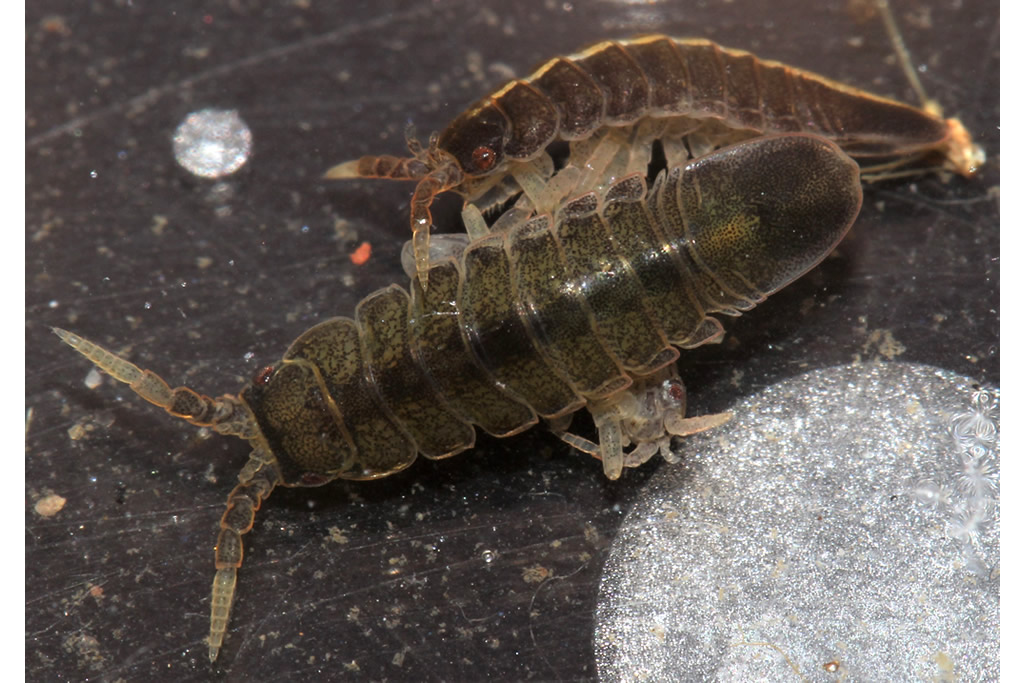Idotea pelagica Leach, 1816
Status:
Native
ID Difficulty
Identification
Idotea are relatively large, conspicuous and common marine isopods with oval or oblong bodies. Although they often have striking colours and patterns, these are not particularly useful for distinguishing between the various species. Rather, identification should be based on characteristics of the antennae, the coxal plates and the pleotelson.
Males of I. pelagica grow up to 11 mm in length, whilst females reach 10 mm. The unkeeled pleotelson is a rounded U-shape with a short blunt tooth at the tip. The antennules extend to just short of the third segment of the peduncle of the antennae or just beyond, and the antennae themselves are short and robust, with the flagellum being noticeably shorter than the peduncle. The coxal plates are broad and extend from the front to the back of pereonites 4 to 7. The body colouring is mostly purplish-brown, sometimes with white markings.
Distribution and Habitat
Found on exposed shores around Britain and Ireland, amongst barnacles, young mussels and stunted brown seaweeds. They can be most easily found by removing small sections of mussel mat and washing them in the usual way.
References
Naylor, E. & A. Brandt. 2015. Intertidal Marine Isopods. Synopses of the British Fauna (New Series), No. 3. Field Studies Council, for The Linnean Society of London.






